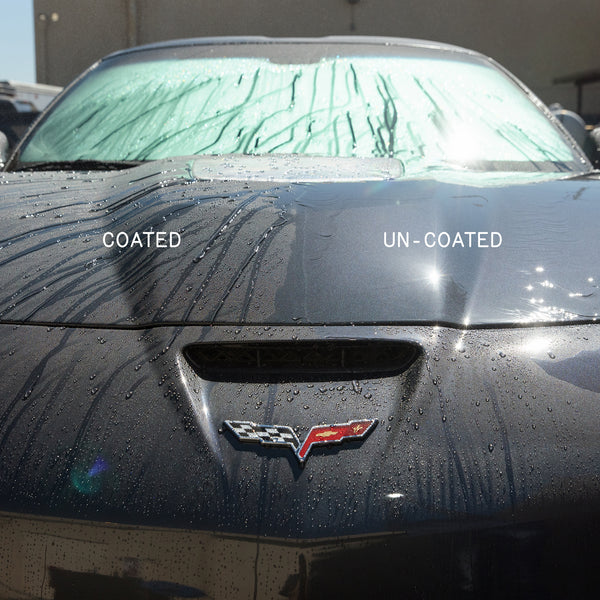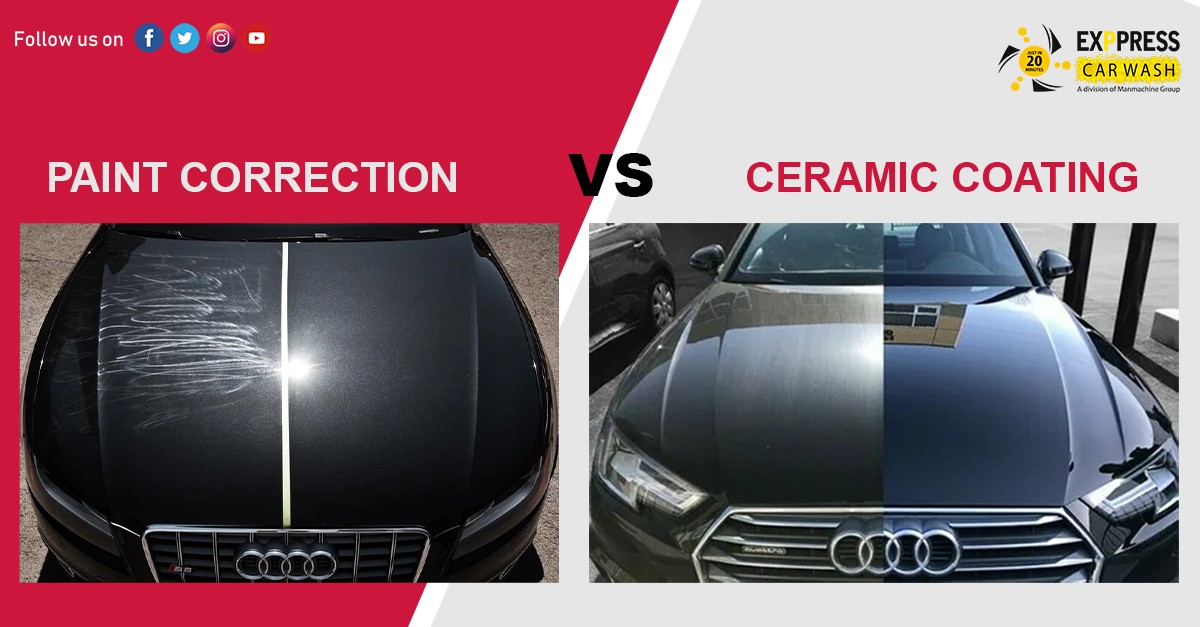Exploring the Science Behind Ceramic Layer and Its Influence On Auto Outlining
The application of ceramic coating in automobile describing represents a significant improvement in automobile treatment, rooted in its innovative chemical homes, mainly silica dioxide and titanium dioxide. Comprehending the scientific research behind these materials reveals not just the safety benefits they provide however additionally their duty in boosting a vehicle's aesthetic longevity. As we check out the ins and outs of the application procedure and the long-lasting effects for lorry maintenance, it becomes clear that the choice of ceramic layer can fundamentally alter one's method to automobile treatment. What factors to consider should be made prior to devoting to this transformative remedy?
What Is Ceramic Covering?
Ceramic covering is a modern remedy that has actually gained appeal in the automotive describing industry for its capacity to offer durable security for vehicle surfaces. This innovative safety layer is usually composed of silica dioxide (SiO2), which develops a solid bond with the car's paint, developing a resilient guard against ecological impurities. Unlike typical wax or sealants, ceramic layers provide remarkable resistance to UV rays, chemical stains, and physical abrasions.
The application of ceramic finishing entails a precise procedure, where the automobile's surface is completely cleansed and sanitized before the finish is used (Ceramic Coating). Once treated, the covering improves the vehicle's gloss, depth, and quality, providing a showroom-quality finish that lasts for many years. Among the key advantages of ceramic finishing is its hydrophobic residential properties, which repel water and dirt, making maintenance much easier and lowering the regularity of washes
The Chemistry of Ceramic Covering
A basic facet of ceramic coating lies in its chemical composition, primarily characterized by the visibility of silica dioxide (SiO2) This substance is indispensable to the development of a long lasting, protective layer that bonds chemically to the car's surface.
Along with SiO2, many ceramic coatings incorporate titanium dioxide (TiO2) and various other ingredients to boost their efficiency attributes. TiO2, for example, contributes to increased solidity and chemical resistance. The communication in between these compounds creates a special molecular framework that provides a high level of protection versus environmental elements such as UV rays, acid rain, and oxidation.
Furthermore, the application process typically includes a meticulous prep work of the surface to guarantee optimal attachment of the finish. This chemistry not only ensures a durable surface however also enhances the visual allure of the lorry. Recognizing the elaborate chemistry behind ceramic coverings is crucial for outlining professionals that aim to give remarkable protection and long life for their clients' vehicles.
Advantages of Ceramic Finish
While outlining professionals commonly highlight the advantages of ceramic finishes, their benefits prolong much beyond aesthetic appeals. The main advantage transcends defense against environmental impurities. Ceramic coverings produce a hydrophobic surface area that wards off dust, water, and grime, substantially reducing the frequency of cleans and the effort needed to preserve a lorry's browse around this site appearance. This protective layer also shields the paint from harmful ultraviolet rays, avoiding oxidation and fading gradually.
In addition, ceramic layers enhance the longevity of the car's finish. Unlike traditional waxes or sealers, which may last a few months, ceramic coatings can endure for years, giving a lasting remedy for cars and truck treatment. This toughness equates to set you back financial savings, as proprietors are less likely to require constant reapplication.
Furthermore, ceramic finishings are resistant to chemical discolorations and etching, which can take place from acidic materials like bird droppings or tree sap. This resistance not just protects the car's appearances however likewise minimizes potential damages - Ceramic Coating. Generally, the financial investment in ceramic finishing provides vehicle proprietors a substantial return in regards to protection, convenience of maintenance, and long-lasting aesthetic appeal, making it an increasingly preferred choice in the world of vehicle detailing
Application Refine Clarified

As soon as the surface is properly prepared, the ceramic covering can be used. Making use of an applicator pad, the specialist applies the layer in little sections, working in a crosshatch pattern to make certain also coverage.
Once healed, the ceramic covering creates a strong bond with the paint, supplying boosted protection and a shiny coating. Proper application is crucial to take full advantage of the long life and effectiveness of the ceramic finishing.

Lasting Influence on Lorry Treatment
The lasting effect of ceramic finish on automobile care is significant, as it fundamentally alters how proprietors preserve their cars. By creating a durable, hydrophobic layer on the lorry's surface area, ceramic finishes reduce the adherence of dirt, grime, and contaminants. This property decreases the frequency of cleaning needed, ultimately preserving water and cleansing products.
Additionally, the UV defense provided by ceramic coverings aids to avoid oxidation and fading of the automobile's paint, protecting its aesthetic appeal and resale worth in time - Ceramic Coating. This safety barrier additionally decreases the likelihood of scratches and swirl marks, which prevail concerns in conventional paint coatings
Additionally, ceramic coverings help with less complicated upkeep, allowing owners to cleanse their cars with marginal effort. The smooth surface area makes it difficult for my link pollutants to bond, enabling easier elimination during regular cleaning.
Over time, the investment in ceramic coating may bring about cost financial savings in car treatment products and solutions. On the whole, the withstanding advantages of ceramic coatings not just boost the appearance of automobiles yet likewise contribute to a much more sustainable and reliable approach to automobile upkeep.
Verdict
To conclude, the application of ceramic finish stands for a considerable improvement in car outlining, driven by its special chemical composition of silica dioxide and titanium dioxide. This innovation not just enhances the aesthetic appeal of lorries but also offers robust security against environmental risks and use. The long-lasting benefits, including decreased maintenance frequency and boosted longevity, emphasize the worth of ceramic coatings as a necessary financial investment for preserving automobile appearance and integrity over time.
